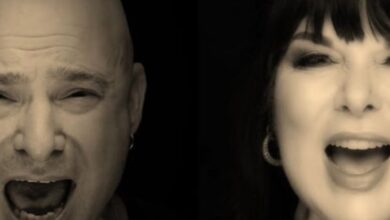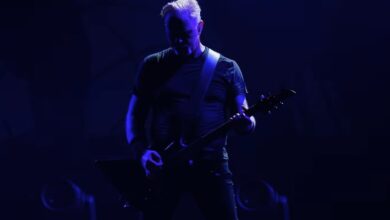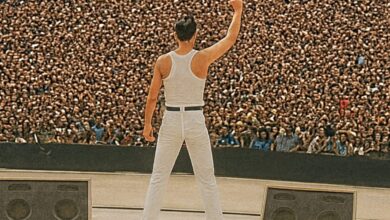Metallica Turn Dreamfest Into a Night of Power, Purpose, and Pure Memory
The first clue that this wasn’t a standard hometown gig arrived months earlier, when organizers confirmed Metallica would headline Dreamfest at San Francisco’s Chase Center. This was no ordinary concert; it was a charity powerhouse, raising millions for UCSF Benioff Children’s Hospitals. The crowd mixed tech executives, longtime fans, and first-timers—proof that when Metallica plays for a cause, the city listens.
Dreamfest has always balanced glamour with grit, but this one carried a different charge. The sight of suits and Metallica shirts in the same row said it all. Ticket prices were steep, yet everyone knew what they were buying into—a night of heavy music fueling something bigger than entertainment. The Chase Center lights dimmed, and the unmistakable rumble of “The Ecstasy of Gold” filled the room.
As the band hit the stage, the energy was instantaneous. “Creeping Death” and “For Whom the Bell Tolls” turned the arena into a thunderous mass, with James Hetfield grinning between riffs like a man truly at home. By the fourth song, the lights cut to blood-red as he growled the opening line of “The Memory Remains,” the Reload-era anthem that somehow grows more haunting with time.
The crowd needed no prompting when the chorus arrived. Thousands of voices filled the arena, taking the role once occupied by Marianne Faithfull on the original recording. The “la-da-da” chant echoed for nearly a minute after the instruments stopped—proof that this song has become one of Metallica’s most communal moments, a bridge between eras.
The band released crisp multi-cam footage days later, capturing every hair-raising detail. Lars Ulrich’s relentless groove, Robert Trujillo’s fluid bass line, and Kirk Hammett’s perfectly phrased leads all served Hetfield’s growl with precision. It wasn’t nostalgia—it was evolution. Each note carried decades of shared history between the band and the city that birthed them.
Dreamfest’s condensed format forced efficiency; the setlist was tight, the pacing deliberate. With only a dozen songs, there was no filler, just the hits and a few surprises. “The Memory Remains” sat in the perfect slot—early enough to ignite the crowd, late enough to linger emotionally. It embodied the night’s theme: remembrance, endurance, and connection.
The song’s history added another layer. Originally released in 1997, “The Memory Remains” captured Metallica’s fascination with fame’s decay, a meditation on legacy. Here, nearly three decades later, that message hit differently. In a hall filled with philanthropists and lifelong fans, the lyric “Fortune, fame, mirror vain” rang like a self-aware grin—proof the band understands its own myth.
Every member played with intent. Hetfield’s tone was gritty yet controlled, Trujillo’s low end thundered through the floor, and Ulrich punctuated every chorus with the kind of precision that comes from muscle memory and pride. Hammett’s solo—restrained, melodic, surgical—brought balance. The chemistry onstage showed why Metallica remains the benchmark for live metal performance.
San Francisco shows always bring a looser, warmer energy from the band. Hetfield cracked jokes about the city’s traffic, Lars shouted out familiar faces in the crowd, and Kirk, ever the local, soaked up applause from his hometown faithful. That sense of family is what separates a Bay Area Metallica gig from any other stop on their global itinerary.
Fans leaving the venue described the performance as both nostalgic and freshly alive. Many noted that the “Memory Remains” chant followed them out into the night—echoing in the concourse, in ride-share lines, even on the walk back toward Mission Bay. It wasn’t just a song anymore; it was a shared anthem, an audible memory living up to its name.
The benefit itself raised an enormous sum for children’s healthcare, but what lingered wasn’t just the money. It was the feeling that heavy metal had served as a vessel for generosity, that a genre often misunderstood for aggression could express empathy in its loudest form. For Metallica, that duality—power and purpose—has become second nature.
Even the stage production reflected that balance: minimal theatrics, no pyrotechnics, just light, shadow, and precision. When the chorus hit, every spotlight swept over the audience instead of the band, turning the crowd into the show’s true centerpiece. It was an artistic nod to the song’s core idea—memory as something collective, not individual.
In the weeks that followed, fans replayed the uploaded performance obsessively. YouTube comments turned into mini-essays about aging, endurance, and what Metallica means to people who’ve grown up with them. Younger listeners discovered a song from before their time and found something timeless inside it. That’s how legacy perpetuates itself—not through nostalgia, but through renewal.
For the band, 2025 was a year of reconnecting with their 90s catalog and recontextualizing songs once deemed controversial. “The Memory Remains,” once a divisive single, now feels prophetic. Its chorus about echo and endurance mirrors the band’s own career arc—still selling out arenas, still giving back, still roaring with the same conviction decades later.
By the end of the night, as “Nothing Else Matters” bled into “Enter Sandman,” the entire Chase Center felt baptized by feedback. The riffs may fade, but the resonance doesn’t. When you watch the official clip today, you can still feel that charge—that unfiltered moment when heavy metal became human again.
In the end, the title proved more than a lyric. The memory really does remain—not just in the recordings or headlines, but in the hearts of everyone who stood under those lights. It was a night that reaffirmed what Metallica has always stood for: strength, unity, and the belief that even the loudest music can heal.





